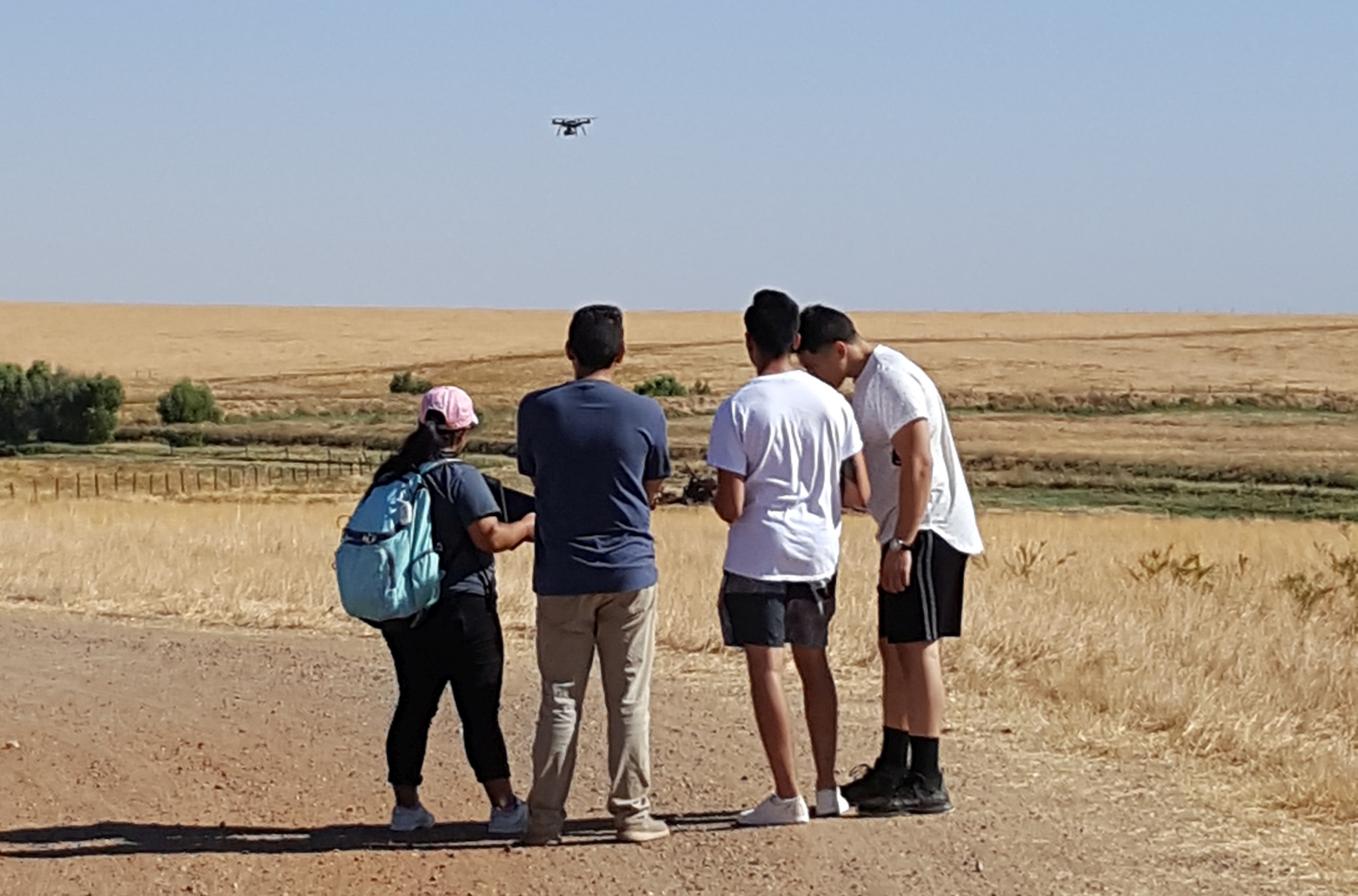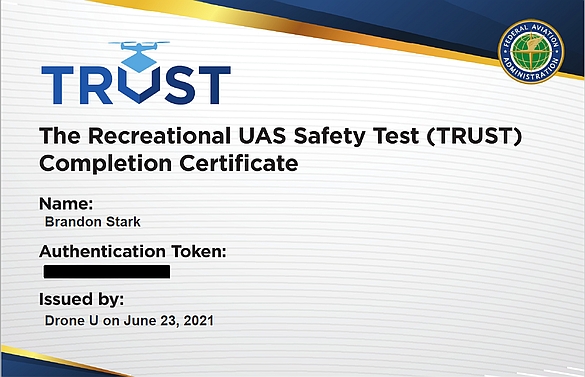Chapter 11 Academic Use of UAS
11.1 UAS Regulations for Academic Use
In Oct 2018, the FAA Reauthorization Act of 2018 was signed into law with two provisions significantly relevant for the University of California: Sec 349 - Exception for Limited Recreational Operations of Unmanned Aircraft and Sec 350 - Use of Unmanned Aircraft Systems at Institutions of Higher Education.
In Sec 350, Congress decreed that for the purposes of Sec 349, a recreational purpose shall include an unmanned aircraft system operated by and institution of higher education for educational or research purposes. The phrase ‘educational or research purposes’ includes
- Instruction of students at the institution
- Academic or research related uses of UAS that have been approved by the institution
- Activities undertaken by the institution as part of research projects
- Other academic activities approved by the institution
Given this wide definition, this provision is relevant to approximately 75% of the University of California’s UAS activity.
In Sec 349, Congress rewrote the statutes in the USC that was previously associated with ‘model aircraft’ use, now referred to as ‘Recreational Operations.’ To abide by the new ‘Recreational Operations’ statute,
- The aircraft must be operated in accordance with or within the programming of a Community-Based Organization (CBO)
- The aircraft must be flown within VLOS
- The aircraft must be operated in a manner that does not interfere with and gives way to any manned aircraft
- The operator must obtain prior approval from the FAA to operate within controlled airspace
- The aircraft may not fly more than 400 ft above ground level in uncontrolled airspace outside of designated ‘fixed-sites’, and
- The operator must pass an aeronautical knowledge and safety test, and maintains proof of passage to be available to the FAA and law enforcement.
The new statutes can be interpreted as stricter than the previous ‘Model Aircraft’ regulations, however, due to the inclusion of Sec 350, they offer a new and easier path forward for many University of California use. Previously, all research activity with UAS required a 14 CFR 107 Small Unmanned Aircraft System Remote Pilot Certificate (Drone License), which can be a challenging imposition in a 10 week quarter. The new regulations provide an alternative more suitable for introductory student UAS activity.
The application of the Policy still applies to the academic use of UAS, regardless of the regulations or statute that enables the UAS activity. All UAS activity subject to the Policy will require both a UAS Request Form and a UAS Post-Flight Report, and be compliant with all applicable regulations. Depending on the specific UAS activity, the Designated Local Authority or location specific policy or procedure may additionally opt to issue open or standing approval under specific conditions that are deemed to be of low or minor risk on the condition of compliance with regulor submission of Post-Flight Reports.

Figure 11.1: Students flying UC-owned UAS for coursework on a University Location
11.2 The Recreational UAS Safety Test
Starting in June 2021, all recreational flyers must pass an aeronautical knowledge and safety test and provide proof of test passage (the TRUST completion certificate) to the FAA or law enforcement (including campus police) upon request. The test is free for everyone and takes 20-30 minutes to complete.
You may take The Recreational UAS Safety Test at any of the administrators found on the FAA’s website: https://www.faa.gov/uas/recreational_fliers/knowledge_test_updates/
The TRUST is divided into two sections:
- The first section provides you with the information needed to pass the test.
- The second section is a series of multiple choice questions. You cannot fail the test. If you answer a question incorrectly you will be provided with information on why the answer you chose was incorrect and will be promoted to try again.
Upon completion of the TRUST you will receive a completion certificate. The certificate never expires however if you lose your certificate you will need to re-take the test and obtain a new certificate. Neither the test administrator, nor the FAA, will maintain personally identifiable information about the recreational flyer so it is not possible to re-print or re-issue your original certificate. We recommend uploading your certificate to UC Drones so that you have a backup copy available.
11.2.1 What is TRUST?
TRUST is The Recreational UAS Safety Test. It provides education and testing for recreational flyers on important safety and regulatory information. If you fly your drone recreationally under the Exception for Recreational Flyers you must pass the test before you fly - this includes both recreational use and certain academic use-cases.
11.2.2 How Can I Take the TRUST
You may take the free online test through any of the approved test administrators listed on the FAA’s website here: https://www.faa.gov/uas/recreational_fliers/knowledge_test_updates/. After you complete the TRUST, you will be given the option to download your TRUST certificate and write down your Authentication Token. We recommend uploading your TRUST certificate and entering your Authentication Token into your pilot profile within UC Drones.
11.2.3 Who made the TRUST?
The FAA provides education and testing content to FAA Approved Test Administrators of TRUST, who in turn provide the content to recreational flyers for free.
11.2.4 What does the TRUST certificate look like?

11.3 Frequently Asked Questions
Which set of regulations do I fall under?
For any academic related activity, it depends on whether your operations fit within the Recreational Operations exemption, otherwise you default to abiding by 14 CFR 107 regulations. Keep in mind that the Recreational Operations exemptions mandates compliance with a CBO’s safety guidelines which may have stricter restrictions than 14 CFR 107. But if the purpose is for the University, but not academic (example: Media & Communications, Facility Inspection), then you must abide by 14 CFR 107 regulations.
When doing an academic activity, which set of regulations is better?
There are advantages and disadvantages to both scenarios. In many cases, the new ‘Recreational Operations’ may be the fastest path forward for simple, rural flight operations. At the current time, academic UAS activities that plan on flying in certain controlled airspace areas, over occupied structures, within 25 ft of another person, or outside of a reasonably controlled flying site, should proceed with 14 CFR 107 regulations.
What are some of the airspace restrictions of ‘Recreational Operations’?
Under ‘Recreational Operations,’ RPICs must obtain Airspace Authorization similar to 14 CFR 107 operators either through LAANC or DroneZone. However, unlike 14 CFR 107 operators, recreational RPICs are prohibited from requesting airspace altitudes that exceed the published altitude limit in the FAA’s Facility Map. For example, at UC Santa Barbara, the Facility Map lists an allowable altitude of 0 ft AGL (effectively no flying) over the majority of campus. A licensed RPIC operating under 14 CFR 107 may request and be granted special authorization to fly up to 100 ft AGL. However, an unlicensed RPIC recreational operator would be prohibited from flying at all in the same location.
What does the new regulations mean when it says ‘the programming of a Community-Based Organization’?
The regulations do not require you to be a member of a CBO but that you abide by the rules and safety guidelines of a community-based organization. While not yet officially recognized, the Academy of Model Aeronautics is one of the largest CBOs and have an extensive safety history for those that abide by their rules and safety guidelines (located here: https://www.modelaircraft.org/sites/default/files/100.pdf ). These rules and safety guidelines often include prohibition on flying over people and buildings, limitations on suitable flying locations and specific standoff distances.
What does the new regulations mean when it says “The operator must obtain prior approval from the FAA to operate within controlled airspace”?
The FAA is mandating that all controlled airspace access requests for recreational operations be routed through the Low Altitude Authorization Notification Capability system (LAANC) and not by calling the local airport tower. The LAANC system can provide instantaneous authorization via a 3rd party application such as Airmap, KittyHawk, or UASideKick for flight requests below a certain altitude depending on your location.
I am planning to fly over a research site that is access controlled and the airspace is uncontrolled, do I need a Drone License?
Typically not. This common scenario (such as in Figure 11.1) will typically meet the necessary site requirements for Recreational Operations.
I am planning to fly along the beach to monitor coastal erosion, do I need a Drone License?
Unless the beach is to be closed to the public, this scenario will likely require a Drone License.
I am planning on flying in the campus quad to test a flight controller, do I need a Drone License?
If the airspace is uncontrolled (Class G), and the area within the campus quad is sufficiently cleared and closed to non-participants, then you do not need a Drone License. If you want to fly at UCI, UCSB or UCLA, then you will need to obtain an Airspce Authorization via LAANC.
I do not have a Drone License, can I do a coursework assignment on the use of drones in building inspections?
You may be able to do some flying without a drone license, however, you will not be allowed to fly over a building and must stay at least 25 ft from all non-participants, which may limit your ability to conduct effective analysis.
I am a graduate student Teaching Asssistant and I would like to teach my students how to fly a drone? Do I need a license? Do the students need a license?
If the site is sufficiently cleared and closed to non-participants, than everyone may have a chance to learn how to fly a drone without a drone license. However, additional safety precautions may be necessary.
What is a fixed-site?
A fixed-site is a location published by the FAA that recognizes that recreational activity may occur in that airspace. While the Academy of Model Aeronautics has obtained FAA recognition of fixed-sites, the FAA has not published information on the formation or requirements to have an area designated as one.
11.4 Personally-owned UAS used for Academic Research or Coursework
Some students, staff and faculty personally own UAS that they may wish to utilize for their respective activity.
Personally-owned UAS used for University Business such as research or teaching are subject to the UC’s UAS Policy, and as such a UAS Request Form and a UAS Post-Flight Report must be completed. This use is allowed and may be provided free coverage under the UC’s UAS liability insurance policy if it is properly documented and the UAS activity abides by the Policy. However, personally-owned UAS are not covered by the UC’s Property Insurance policy - any damage to the UAS by theft, fire, in-transit or in-flight is not covered. Additionally, any UC-equipment attached to a personally-owned UAS is additionally not covered. It is strongly recommended that personal equipment is not used for University Business
Personnally-owned UAS used for coursework, such as senior projects or homework assignments are not subject to the Policy unless operated on a University Location. Additionally, they are not covered by either the UC’s UAS liability insurance policy or the UC’s Property Insurance policy. Students assume all risk and liability for their use.